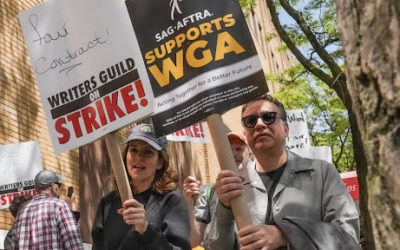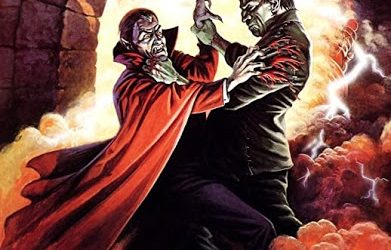Source: Forbes
Many of the major Hollywood studios that make up the Alliance of Motion Picture and Television Producers (AMPTP); despite recently agreeing to a contract with the Writers Guild of America (WGA) that allowed its months-long strike to come to an end, no such deal has yet been made with the other (significantly larger) striking union, the Screen Actors Guild – American Federation of Television and Radio Artists (SAG-AFTRA). With SAG-AFTRA continuing to strike, meaning that the thousands of actors that make up the union are refusing to take part in new film and television productions or promote those that are set to come out in the near future, the studios that comprise the AMPTP are facing great difficulty in either creating new works that they can release in theaters or on streaming or marketing those they are currently planning to put out. In the case of the latter situation, this has swayed the studios to push back films to later release dates than they had originally intended, and with so many of these major releases being delayed farther back than most would desire, the cinematic landscape of the near future appears to be significantly more sparse than most would expect.
Among the more recently announced delays are those relating to films being produced by Walt Disney Pictures, easily one of the industry’s largest and most well-known studios, and its various subdivisions (e.g. Pixar, Marvel, and 20th Century Studios, among others). Just last week, Disney announced that its live-action remake of “Snow White and the Seven Dwarfs”, which had originally been eyeing a release in March of next year, would now be held back for an entire year and will now be released in March of 2025. Another film set to come out next March, Pixar’s animated sci-fi feature “Elio”, was pushed back even further, and it now hopes to come out in June of 2025 (interestingly, Pixar’s other 2024 release, “Inside Out 2”, remains in its current June 2024 release date despite it originally being set to come out after “Elio”). These are just the latest announcements that Disney has made in regards to films that will now be coming out later than originally scheduled; in fact, after Disney’s animated musical “Wish” premieres in theaters just before this coming Thanksgiving, the studio will not have another major theatrical release until May when 20th Century Studios and Marvel’s “Deadpool 3” arrives in theaters, and that’s assuming it also doesn’t get pushed back (which, considering it was previously planned to come out this November, wouldn’t be the first time the film had been hit with such a delay). Other Disney releases produced by Marvel Studios that have likewise been burdened with additional delays include “Captain America: Brave New World”, which is currently set for a premiere at the end of next July instead of at the beginning of May as originally planned; “Thunderbolts”, which was previously set for that late July release but will now arrive in theaters around Christmas of next year; and “Blade”, which hopes for a February 2025 release after its push-back from the earlier plan of a September 2024 release.
Disney, however, isn’t the only studio having to delay many of its biggest cinematic releases as a result of the strike. Warner Bros., for example, famously delayed the release of “Dune: Part 2”, which many had viewed as a potential contender for the upcoming awards season, and it now expects a release in the coming March instead of its original plan to come out this November. Another Warner Bros. release, “Godzilla x Kong: The New Empire”, fared slightly better in terms of how far back its being delayed, as it was only pushed back by a month from its original March 2024 release to April of that same year. Then there’s Paramount, which had recently announced two major releases that would now be delayed: the horror prequel “A Quiet Place: Day One”, which has been moved from an early March 2024 release to a late June 2024 release; and the eighth installment of the long-running “Mission: Impossible” franchise, which is being pushed back by almost a full year from June 2024 to May 2025.
These are the plans at this time, but they should in no way be seen as guarantees, especially as the SAG-AFTRA continues to linger throughout the film industry and keep nearly every major production at a standstill. Of course, the solution to all this should be simple: the studios that currently hold billions of dollars in earnings need to agree to give a portion of that wealth (one larger than what had been previously offered) to those on strike, while also meeting all the other demands being made by the striking actors. At the moment, talks are currently taking place between the AMPTP and SAG-AFTRA, but given how difficult it has been so far to strike an agreement, one shouldn’t get their hopes too high. Even if a deal is reached any time soon, it will still take some time for productions to resume as originally scheduled, meaning there will likely be further delays for many of the upcoming film releases most highly anticipated by the general public.




